
Guide to taking a bike on a ferry
Guide to taking a bike on a ferry
When it comes to travelling with your bike, there are few methods more convenient than going by ferry. In most cases, it’s simply a case of rolling into the port, walking on board pushing your wheels and then heading to the passenger deck. It’s that simple.
Unlike arriving by plane, your cycling tour begins as soon as you disembark at your destination. You’re immersed right into your destination from the start – surely a major reason for anyone’s decision to travel. Many of my most memorable cycling adventures have begun and ended with a ferry, and the only thing I’ve ever needed to worry about is making sure I’m riding on the correct side of the road when I ride off.
Living on an island, the ability to take the sea lanes is a blessing as it really does open up our horizons for cycle travel without the hassle of boxing up a bike for flying or worrying whether there is sufficient space on the train.
Whether you’re planning a trip to the Western Isles or the Isle of Wight, or to our European maritime neighbours in Ireland, France, Spain and the Netherlands, all of these destinations are easily accessible with a bike and often affordably so too (fares start from £5).
With more than 80 routes from the UK and with multiple operators working the lines, Cycling UK has been working with Discover Ferries (the industry body that represents 13 ferry operators in the UK and British Isles) to produce a guide for the cycle-ferry traveller.
Together, we’ve come up with a handy breakdown of some of the operators and their destinations which you can download (accurate as of April 2022), as well as practical advice for travelling by ferry whether you’re just going with your cycle or are planning on attaching it to your vehicle.
There are numerous private operators, too, within the UK that provide crossings for rivers, lakes and lochs. These have not been included in this guide.
If on your travels you do have any thoughts (positive or negative) relating to the information we have provided, Cycling UK wants to hear about it – just pop any comments you might have in the box below (login required).
Looking for inspiration on where to ride? Head to our routes page for some suggestions!
It’s easy to take a bike on a ferry as a foot passenger and cycle off into the sunset from the port, with one of the biggest benefits of cycling when taking the ferry being that often (but not always) you’re one of the first on and first off.
Passengers travelling with bicycles generally check in at the same time as other foot passengers. With car ferries, you’ll usually be directed to queue in a dedicated lane where you wait until told to cycle up to the ferry ramp.
Sometimes you may have to wait a while. It can be quite exposed, so you’ll want to make sure you have appropriate clothing to hand depending on the weather.
You will have to dismount from your bikes once you reach the vehicle ramp due to the risk of slipping on wet metal, and then push your bicycle up the same vehicle ramp as that used by cars. Stewards will be on board to instruct cyclists where to leave and secure your bicycle.
For foot ferries, you might have to access the vessel via a narrow gangway, so it’s worth thinking about removing your luggage and making two trips. Depending on the tide you might also find in certain ports you can have a steep ascent or descent to reach the gangway.
Once on board, travellers will be shown where to park and secure their cycle on the deck for the crossing. On car ferries your bike will be stowed on the car deck which is inaccessible once the ferry leaves, so make sure to stow anything that could be knocked off the bike – lights, bike computers and so on– and take any luggage you need.
On foot ferries, frequently your bike will also be inaccessible and occasionally exposed to the elements, so make sure all your luggage is securely fastened, saddles covered (especially leather ones) and components are packed away.
How your bike will be secured during your journey will depend on the operator. It can be to the floor, wall or a railing for the crossing.
There will usually be some rope to help fix your bike, which is your responsibility. It’s worth learning a couple of simple knots such as the Bowline or Reef knot to help with this. Bringing your own bungee or other means of securing your bike is recommended at all times, but particularly during peak times when there are more travellers.
For further information relating for some of ferry operators leaving the UK, see below.
Brittany Ferries
Accepts bicycles with foot passenger bookings for a small additional fee on routes between Portsmouth and France (Caen, Saint Malo and Cherbourg), Portsmouth to Spain (Santander; £75 for cycle carriage), Poole to Cherbourg, and Plymouth to Roscoff in France, or Plymouth to Santander in Spain.
For the Portsmouth to Spain route, Cycling UK has heard some reports of people bagging their bikes and taking them on as luggage when booked as a foot passenger to avoid the £75 fee.
Visit www.brittany-ferries.co.uk or call 0330 159 7000.
Caledonian MacBrayne
Accepts bicycles free of charge with paying foot passengers on its multiple routes throughout Scotland’s West Coast and islands. Passengers travelling to the terminal by train will need to check with Scot Rail to find out if they need to book their bikes onto the connecting train service.
Visit www.calmac.co.uk for more information.
Condor Ferries
If you’re travelling as a foot passenger, there’s no charge for taking your bike. Space is limited, though, so you need to include the bike when you make your booking, by selecting ‘Bicycle – wheeled on’ in the Extras page. Alternatively call 0345 609 1024.
Visit Condor’s Travelling with your bicycle page for more information.
DFDS
Accepts bicycles on its routes between Newcastle and Amsterdam, Dover to Calais, Dover to Dunkirk, and Newhaven to Dieppe. It also accepts foot passengers with bikes from £25 per person each way. The DFDS website is packed with useful cycling tips and cycling route advice.
Visit www.dfds.com/en-gb for more information.
Hovertravel
Bicycles are carried free of charge to and from the Isle of Wight, and it is usually possible to carry up to four bicycles per hovercraft subject to freight and luggage. All bikes are secured in racks within the internal storage compartment of the craft.
Check if there is space for your bicycle(s) on the crossing you wish to travel on at the terminal before purchasing your ticket. There is no pre-booking and it is based on a first-come, first-served basis only.
For more information visit www.hovertravel.co.uk.
P&O Ferries
Accepts bicycles as part of a car booking for no additional charge on its routes between Dover and Calais, Hull to Rotterdam, and Cairnryan in Scotland to Larne, Northern Ireland. Foot passengers can also travel with a bike. P&O Ferries doesn’t accept foot passengers with bicycles on its Liverpool to Dublin route.
A clever interactive adventure planner on the company’s website gives ideas for cycling adventures and tips about travelling to watch professional cycling overseas.
Visit www.poferries.com or call 01304 44 88 88.
Red Funnel
Accepts bicycles for no extra charge on its route from Southampton to East and West Cowes. Bike racks are available on Red Jet 6 and Red Jet 7 on a first-come, first-served basis. On other Red Jet services you can only take a fold-up cycle in a cycle bag.
Visit www.redfunnel.co.uk or call 02380 248 500.
Stena Line
Accepts bicycles and charges £10 per bike each way on its routes between Cairnryan in Scotland and Belfast, Liverpool to Belfast, Holyhead to Dublin, Fishguard to Rosslare, and Harwich to Hook of Holland.
Check each service to see whether you are allowed to cycle onto the landing deck or if your cycle is transported differently in a transport van. If your bike is transported in the van, consider protecting the frame as Cycling UK has received reports of users frames being scratched when left unsecure.
Visit www.stenaline.co.uk for more information.
Wightlink
Allows foot passengers to take a bike free of charge on routes from Lymington to Yarmouth, Portsmouth to Fishbourne, and Portsmouth to Ryde on the Isle of Wight. The website site is also packed with tips about cycling on the island and cycle festival details.
Visit www.wightlink.co.uk for more information.
The Isle of Man Steam Packet Company
Allows foot passengers to take a bike free of charge. The company operates regular ferry sailings to the Isle of Man from Heysham and Liverpool (Birkenhead during winter) and seasonal sailings from Belfast and Dublin.
Visit www.steam-packet.com for more information.
Isles of Scilly Travel
Packs bikes into a luggage hold and therefore must be booked in advance due to the limited availability of space. Bicycles are £28.84 return (including trailers) and children’s bikes and scooters (under 5) are £10.
Visit www.islesofscilly-travel.co.uk for more information.
Irish Ferries
Bicycles are permitted on board the following crossings: Dublin to Holyhead, Rosslare to Pembroke, and Dublin to Cherbourg. Foot passengers can travel with a bike from £10/€10 each way.
Visit www.irishferries.com or call 03717 300 400.
Uber Boat by Thames Clippers
Cyclists can sail through the heart of London on the ferry services, stopping off regularly and sightseeing by bike from each pier. Uber Boat by Thames Clippers serves 24 piers across London, from Putney in the west to Barking Riverside in the east. Each ferry has space for up to 14 cycles on a first-come, first-served basis at no extra charge.
Visit www.uberboatbythamesclippers.com.
Discover Ferries points out that the majority of passengers taking ferry holidays with bikes simply strap them onto their cars, caravans or motorhomes in racks or boxes. The pricing of taking bikes on a vehicle is simple – passengers just need to include the additional height and length of the vehicle when making their normal ferry booking for their car.
While the booking process is simple, it is worth remembering that rear-mounted cycle racks can obscure rear lights and number plates so car owners may need a lighting board with number plate and electrical supply to ensure their car and bike racks are legally roadworthy.
If you’re thinking about travelling this way, and are not sure about what type of car rack you might need, Cycling UK has produced a guide for car racks to help you out.
For further information relating for some of ferry operators leaving the UK, see below.
Red Funnel
Return crossings between Southampton and East Cowes start from £49 for a standard size car. Bikes attached to an overhead bike rack can be carried for £5 each way if between 2m -2.7m in height, or for £20.50 each way if over 2.7m in height. They are free of charge if under 2m or attached to the bike rack on the back of the car.
For booking visit www.redfunnel.co.uk or call 02380 248 500.
Stena Line
One-way crossings on Harwich to Hook of Holland start from £61.50 for a car and driver, with a bike rack attached at the back of the car. One-way crossings from Cairnryan to Larne start from £124, and from Holyhead to Dublin from £119, for a standard car with a bike rack attached to the back of the car.
For more information visit www.stenaline.co.uk or call 03447 707 070.
The Isle of Man Steam Packet Company
Crossings to the Isle of Man from Heysham and Liverpool and seasonal sailings from Belfast and Dublin start from £116 each way for a car with a bike rack attached and two people for a five-day short break.
Visit www.steam-packet.com.
Wightlink
Return crossings on its Portsmouth to Fishbourne route start from £57 for a standard size car. Car ferries also operate between Lymington and Yarmouth. Vehicles carrying bicycles will be charged an additional cost if the bicycles add additional height or length to your vehicle – see the Vehicle size guide for details.
To book crossings, head to www.wightlink.co.uk.
Brittany Ferries
One-way fares on the Portsmouth to Caen route start from £89 for a standard size car (up to 5m long and 1.83m high) with rear-mounted bicycle rack.
To book, call 0330 159 7000 or visit www.brittanyferries.com.
DFDS
Crossings on the Dover to France route start from £68 one way for a standard car with a bike rack attached. Newcastle to Amsterdam is from £48 per person one way with a car.
See www.dfds.com for more information.
Irish Ferries
One-way crossings on both UK to Ireland routes start from £119 for a standard size car and driver, with a bike rack attached. A one-way crossing from Dover to Calais starts from £64 for a standard size car, with a rear bike rack attached.
For more information call 03717 300 400 or visit www.irishferries.com.
P&O Ferries
For a standard size car with the bike rack attached to the back, fares on the Dover to Calais route start from £68 each way, on the Cairnryan to Larne route from £114 each way and on the Hull to Rotterdam route from £159 each way.
For more information, please visit www.poferries.com.
Caledonian MacBrayne
Return crossings on the Wemyss Bay (a short car or train journey from the centre of Glasgow) to Rothesay (Isle of Bute) route start from £37.50 for a standard size car, with a bike rack attached, and two adult passengers free of charge.
Call 0800 066 5000 or visit www.calmac.co.uk.






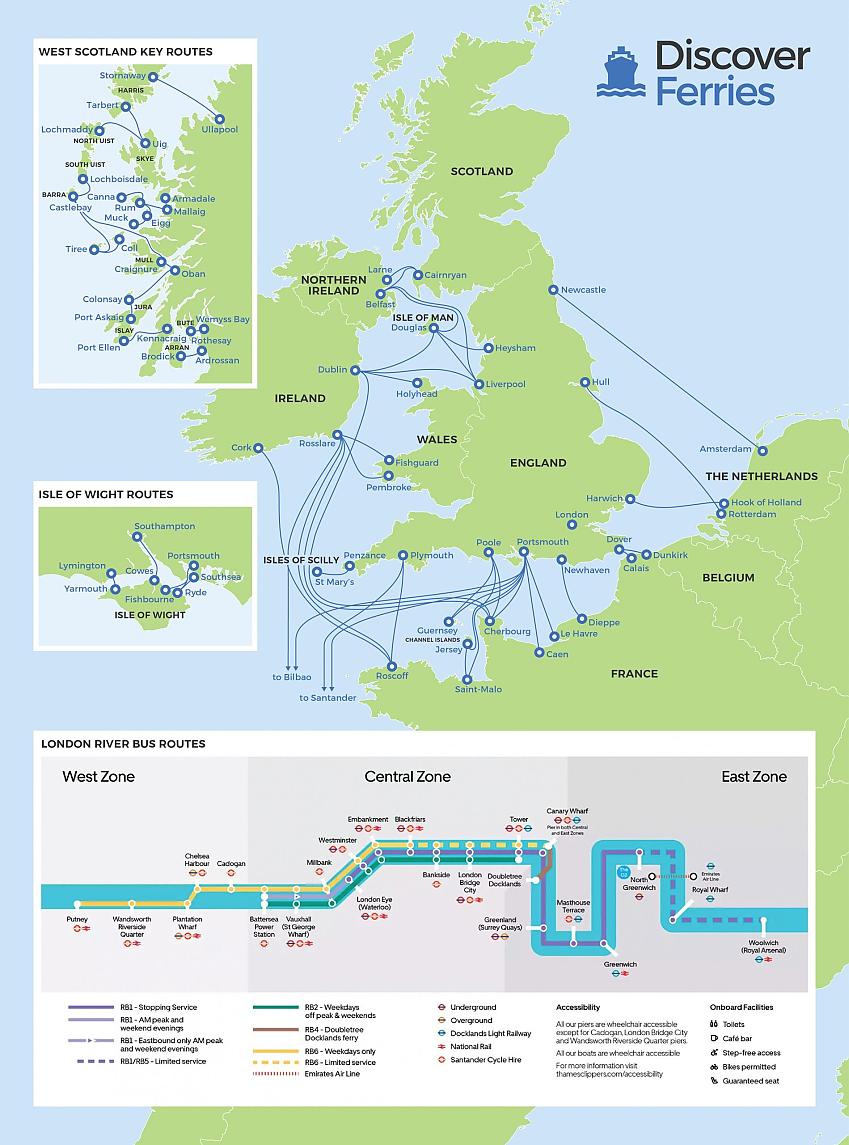
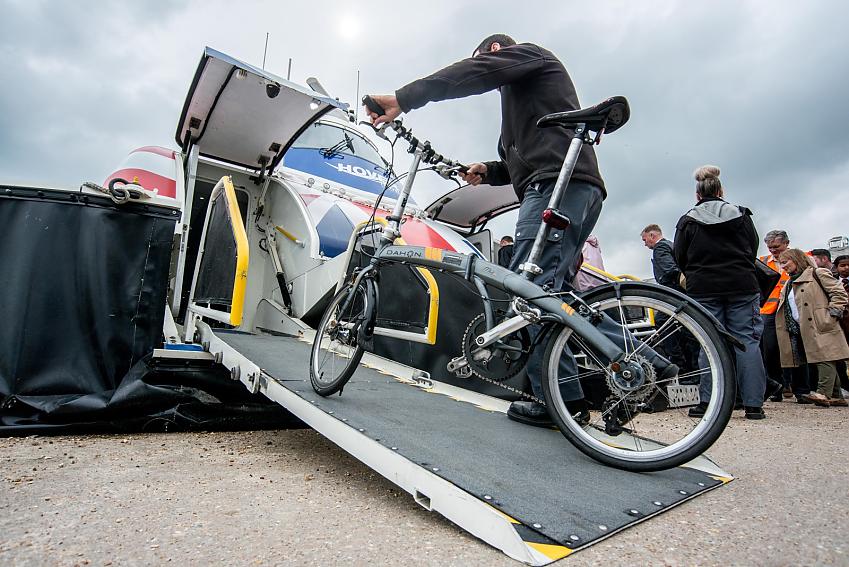
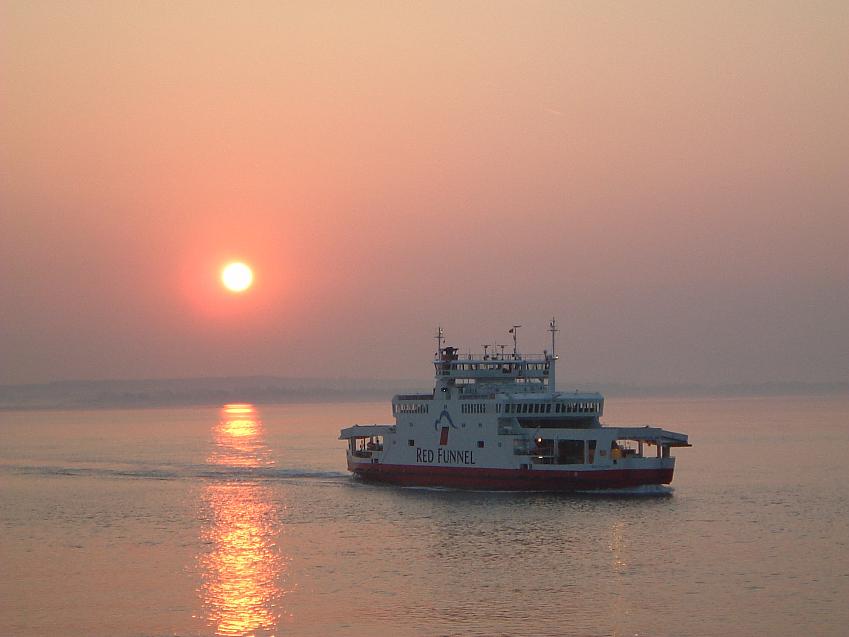
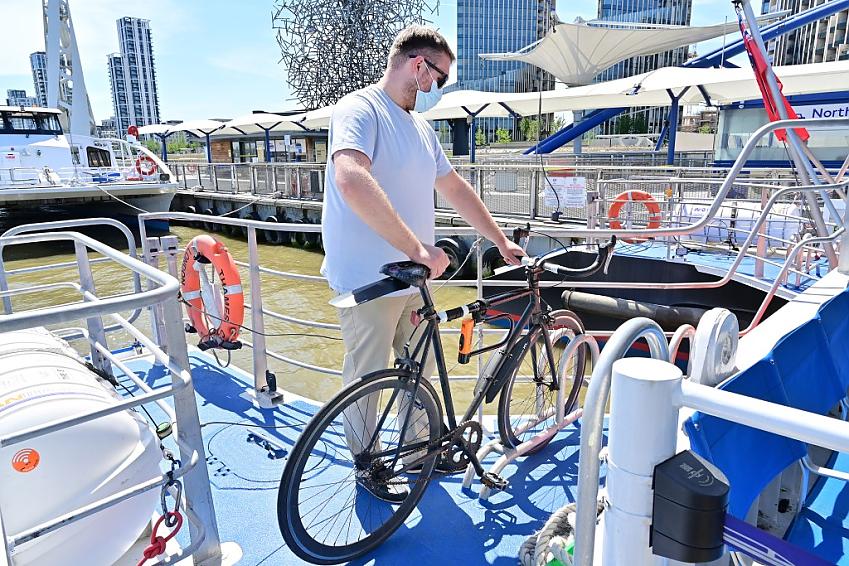
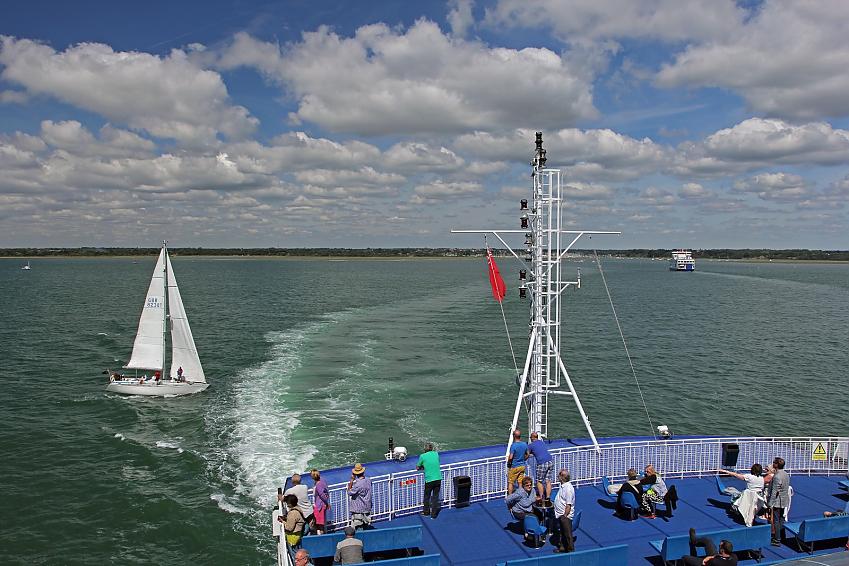
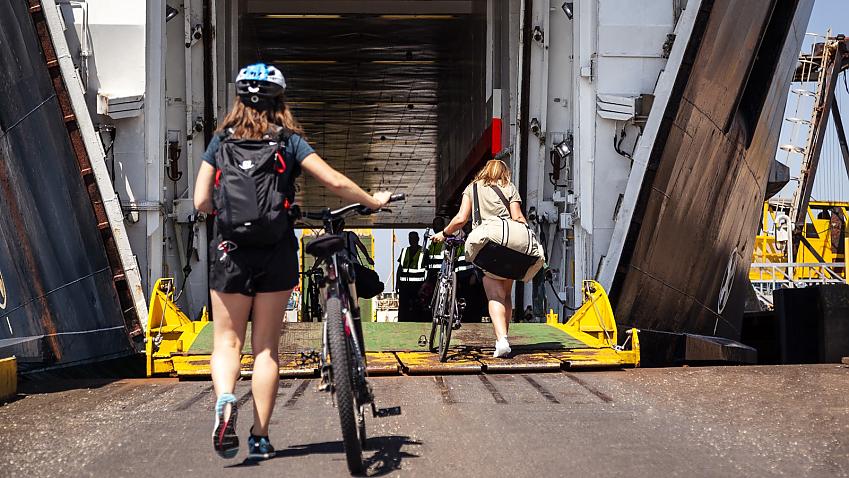
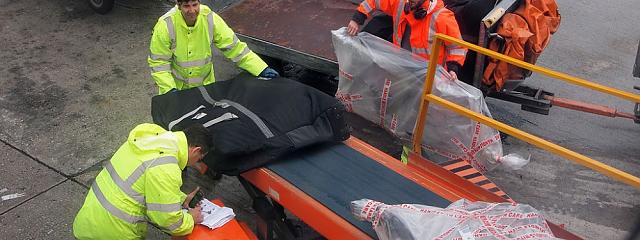
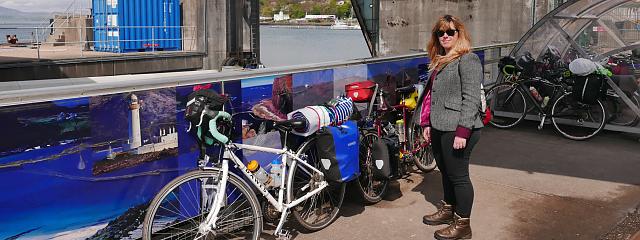

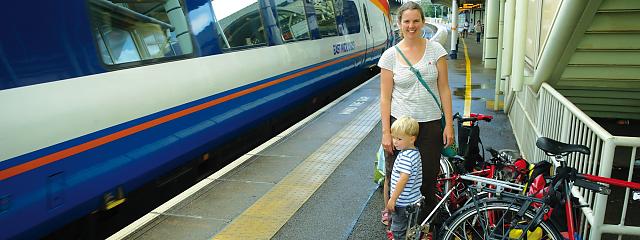
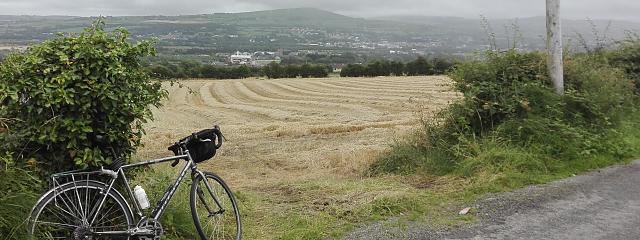
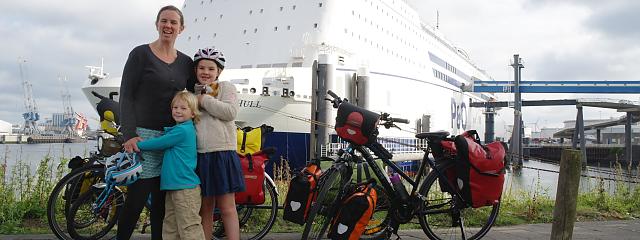
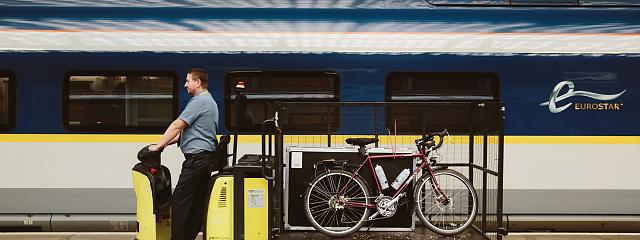




Comments
Ferries article - Channel Island ferries
Why no reference to the Channel Island ferries?
Channel Island Ferries
A good point! This is still a work in progress, so this sort of input is really helpful. We'll definitely be looking to include these, and the ferries to Shetland and Orkney too. Thanks!
Scottish ferries
Why no mention of the ferries from Aberdeen to Orkney and Shetland nor the multiplicity of ferries within both these island groups. Kyle of Lochalsh ferry hasn't existed since the Skye Bridge was completed in 1995. The ferry from Glen Elg to Skye is also missing.
Brittany Ferries from Portsmouth to St Malo and Caen
I have a few years experience of using these links, unlike Sam, found the boarding process to be unfriendly for cyclists.
Taking a tandem is no longer straightforward on some ferries
We have to agree with Duncan Murray, that taking ferries with bikes is now a mixed experience, where previously it was much more carefree. Some routes, like the ones in Scotland and to/from the Isle of Man are still excellent, but on others bikes are now treated as an inconvenience in the domain of vehicles.
A couple of years ago, we cycled to Holyhead on our tandem, across to Dublin, round the top half of Ireland and back from Belfast to Birkenhead. At Holyhead we had to go through the airport-style security checking (whereas motorists drive straight on despite having way more carrying capacity for anything untoward!) and then were told that if we were unable to get our bike into the shuttle bus then we simply wouldn't be allowed to travel. With some fiddling around, we got the bike onto the coach, just.
When we arrived in Belfast the reception was a lot friendlier but they were so taken aback at the prospect of a tandem, that it was comical. There was no way that we'd get our bike onto either their small shuttle bus or the cycle trailer, so we were checked in and scanned, and then asked to wait outside while they worked out a plan. Eventually we were told to ride to the front of the queue of motorists, that we would be boarded first and that our bike would go in the office of the car/truck deck manager. We were warned that he was unhappy about the plan but had been overruled. Riding to the ramp caused no issues to anyone at all and even the grumpy manager calmed down. Getting off the ferry proved more complex because they were determined that we had to use the double decker bus instead of simply following the vehicles out.
It would be very helpful if Cycle UK do more work with Discover Ferries to improve the experience on some routes, particularly on the larger ferries. We don't necessarily need priority treatment, just a basic level of provision!
Ferries by Cycle
I echo many of Duncan Murray's experiences. Vehicular drivers and passengers are protected from the weather, maybe motor cyclists are to some degree by their leathers, but cyclists have a lightweight cag at best. Secure / easily viewed parking for bikes with access to the cafe and loos should be the 'norm'; if not then a heated conveniently located shelter is next best. I have experienced '2-wheel comraderie' with motor cyclists so any facilities should be good for them too. Our best experience - leaving Europort for Hull - the Dutch really do know how to prioritorise cyclists. Fred
Stenaline Holyhead to Dublin
FYI bicycles are treated as luggage, travelling either direction, Holyhead- Dublin or Dub - Holyhead. The bicycle is taken off you at check in and manhandled onto a luggage truck, which is then driven onto and travels with the ferry, then on the far side, you will find it in the baggage hall, on both occasions, B4 I arrived in the baggage hall myself, unceremoniously propped up against a wall. A bit disconcerting, esp if you have a very valuable bike and the baggage hall in Dublin was full of members of the public and stag weekend revellers :(
Stena Line
On the Birkenhead to Belfast ferry you are made to put your bike on to a rather decrepit truck, which then takes your bike through the car park to the ferry. My bike fell over and was dragged on its side, tearing up my nice new, and rather expensive pannier. When I asked for compensation they said I had agreed to terms which meant I had to meet the first £320 in damages.
Stena - Birkenhead to Belfast
My experience in 2021 is similar. Woefully inadequate bike ‘trailer’ towed behind the luggage van. Only room for 6 bikes in total!! Cable ties are available to secure the bike but high risk of damage especially if rough weather.
I emailed Stena to complain and suggested improvements but never got a reply. Very disappointing customer service.
Encourage more members to lobby Stena to improve the service to travelling cyclists on the Irish-UK routes
updates in March 2022
While I understand using a 'ready-made' map like that provided by Discover Ferries, I made my own map (years ago) and keep it updated. The impetus was to enable me - at a glance - to spot 'circular' routes that are interesting and different. eg getting to Scotland by going via France. Or a loop Ireland to Scotland and back by different routes.
So - while I understand the map (3 years later?) still doesn't include the Orkneys and Shetland, or Channel Islands (and don't forget Alderney, and connections from the islands to France), it needs some other updates such as:
Add Kintyre Express with its 2 routes between NI and Scotland.
Delete Oban - Lochboisdale route which now goes Mallaig - Lochboisdale.
What about the Weymouth - St Malo route?
And Rosslare - Bilbao ?
There are various short but vital Scottish ferries missing, eg Arran (Lochranza) to Kintyre, Lismore to Oban and to Port Appin. And the ferry across the Kyle of Lochalsh. And the 2 vital linking ferries in the Outer Hebrides.
(later) 2 more come to mind, Tobermory to Ardnamurchan, and Mull to Loch Aline, both vital for interesting cycling in that part of the world. Oh, and the short hop ferries to Iona, Ulva, Gigha, and probably others.
I suggest the biggest 'missing piece' is a much better map, or maps. Happy to share mine if contacted.
Booking procedures
One aspect of taking a bike by ferry, perhaps the first step in the journey, is making a booking, where that is needed. These days, that will often be done online. Sadly, not all operators make this process easy for those wishing to take their bike(s). For example, in the P&O and DFDS booking systems, you can choose 'Bicycle' when asked for vehicle details but if you are a group, say two parents and two children, and specify 4 people, the booking system only lists a single bike with no option to update the number. This is hardly bike-friendly. Stena and Brittanly Ferries, on the other hand, allow you to specify the number of bikes form the outset.
Booking passage on a ferry would appear to be as challenging as trying to book a ticket for a bike on a (UK) train ... but that's another story!
Le Havre
Think your article is a bit out of date! I was hoping to sail to Le Havre this summer but Brittany Ferries seem to have dropped the route from Portsmouth. Shame, as the coastline to/from Cherbourg makes a lovely gentle, low-traffic ride that I've done 3 times in the past.
The article shows Le Havre on the map, in the downloadable timetable which says it is accurate as of April 2022 but isn't and in the Brittany Ferries section of the article...
Interesting article but you
Interesting article but you forgot to include Western Ferries which runs between Gourock (Inverclyde) and Dunoon (Cowal).
CalMac also run a passenger-only ferry service between Gourock and Dunoon. This is probably better for those who prefer to use the ScotRail train connection at Gourock pier. Both Western Ferries and CalMac carry bicycles free of charge.
Also there's the CalMac ferry service between Largs and Isle of Cumbrae, which is very popular with cyclists.
Ferries in Germany
Once you have crossed the Channel, there are a few rivers and lakes this side. I live in Germany. Almost all ferries here take bikes. The ones on the Bodensee (Lake Constance) carry enormous numbers in summer. The cross-Rhein ferries we use near Düsseldorf generally have many more bikes than cars at the weekends.
Trikes on ferries.
I found the article interesting and informative, but it had no mention of recumbent trikes (or bikes for that matter). Whilst I've never actually been stopped using a ferry I have had some specific difficulties. Narrow gangplanks can be a problem, especially if you have to walk it. Hauling the trike over a low steel gunwale (into a bike parking bay) took the paint off the underside. Having to walk a loaded trike up a steep car ramp is a pain and dangerous (and I don't really understand why it's considered safer to walk a trike). Getting the trike into the back of the bike truck at Birkenhead needed extra hands. Booking ahead can be difficult because websites, and/or real people, don't recognise the term "recumbent trike". There have been discussions in the forum on this subject, and it would seem that the problem can be difficult in cross channel ferries, with some ferries classifying trikes as motorised trikes, with the same price structure. Having said all this, I have never found anything but helpfulness and acceptance by workers on the ferry itself. Nor have I never failed to be squeezed on when I've turned up without booking ahead. All in all, I find a ferry journey just adds to the pleasure. There's an anticipation of the unknown as the doors open and you disembark at the other side.
Frame Protection
If you're precious about your bike's paint job, you might consider carrying a couple of 15cm lengths of DIY-store 22mm grey pipe insulation on your frame, held in place by double sided velcro tape. At busy times, bikes can be piled 3 or 4 deep against the stowage bars on ferries. If the crossing is rough, bikes can change position. Strategically positioned, the insulation will help protect your paint-job from damage. The insulation is also useful in the often haphazard heaps of bikes (a.k.a. bike parks) in many European towns and cities.
BTW I love those bike heaps and would love to see similar numbers of bikes parked in UK towns!
'Sail the channel' ferry
You might find this interesting:
https://saillink.co.uk/
It's carbon-free cycle ferry across the channel!!
DFDS
DFDS remains anti-bike in its pricing strategy.
it may seem unbelievable but it is cheaper to take a bike on the roof of your car when travelling newhaven to dieppe than to travel with a bike with no car (£60 difference). I would rather travel with no car, but for a family of 5 it saves me £300 to take my car. DFDS need to sort this out.
It is also cheaper to travel with car than as a foot passenger (same route, date)